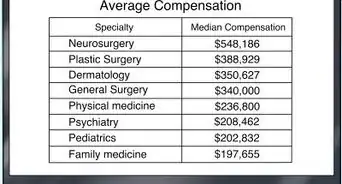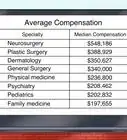This article was medically reviewed by Danielle Jacks, MD. Danielle Jacks, MD is a Surgical Resident at Ochsner Clinic Foundation in New Orleans, Louisiana. She has over six years of experience in general surgery. She received her MD from Oregon Health and Science University in 2016.
There are 15 references cited in this article, which can be found at the bottom of the page.
This article has been viewed 10,963 times.
Pediatric surgeons are highly specialized medical doctors who perform surgery on infants and children, such as to correct damage from trauma, a genetic condition, or a disease. It’s not easy to become a pediatric surgeon, but it is possible if you work hard, and it can be an incredibly rewarding career. Start by completing the required degrees to become a doctor, and then complete the residencies and certifications required to begin working as a pediatric surgeon.
Steps
Earning Your Degree and Passing the MCAT
-
1Meet with your academic advisor before choosing a major. Your academic advisor can help you select a major that will help prepare you for medical school. If your school offers a pre-med bachelor’s degree program, this may also be beneficial to you since the program will have been tailored to prepare students for medical school.[1]
- Technically, you can choose any major you like as long as it satisfies the core requirements for application to medical school. However, there are advantages to each type of major. Choose one that suits your particular strengths and interests.
-
2Take commonly required core courses. Medical schools require a range of science courses in order to qualify for entrance to medical school, so make sure that you choose a major that will cover those pre-requisites. Check with the schools that you plan to apply to determine their pre-requisites. Some of the required courses for entry into medical school may include:[2]
- Biology
- Physics
- General chemistry
- Organic chemistry
- Biochemistry
- English
- Calculus
- Psychology
- Genetics
Advertisement -
3Take the MCAT by September before you apply. The Medical College Admissions Test (MCAT) is a standardized exam meant to assess your knowledge of natural, behavioral, and social sciences as well as your ability to think critically and solve problems.[3] Begin studying for the MCAT at least 3 months before taking the exam. Keep in mind that the exam tests your knowledge of biology, chemistry, and physical sciences, along with your ability to use logical reasoning and analysis.[4]
- The exam includes 4 sections and you have 95 minutes to complete each section, so a great deal of concentration is required to take the exam. Get a study guide or enroll in a study course if possible.
- Be aware that scoring high on the MCAT is crucial for improving your chances of getting into medical school. In 2018, applicants who were accepted to top ranked medical schools in the United States had a median score of 512 out of a maximum possible score of 528.[5]
Applying to and Succeeding in Medical School
-
1Apply only to medical schools that you want to attend. Research medical schools well before you plan to apply and only choose schools that you would seriously consider attending. Look at each school’s website, read about the program, and look into factors like the school’s location, tuition and fees, joint degrees offered, and anything else that might impact your decision.[6]
- If you’re able, you might also consider visiting your top choices or any schools that are within a reasonable driving distance.
- In addition to applying to schools that offer MD degrees, consider applying to schools with DO (Doctor of Osteopathic Medicine) degrees as well.
- It’s a good idea to apply to several schools, since most applicants don’t get accepted on their first application.
-
2Look into fee assistance programs to help pay for applications. Look into the AAMC’s application Fee Assistance Program to find out if you qualify for help with the cost of applications. Aspiring doctors apply to 16 medical schools on average to increase their chances of being accepted. However, the cost of applying to medical schools can be steep and many people cannot afford it.[7]
- For example, most schools in the U.S. require you to apply through the American Medical College Application Service, which charges a fee of $170 for the first application and $40 for each additional application. Therefore, the cost of applying to 16 schools would be $770.[8]
-
3Study hard to graduate from medical school. Plan to immerse yourself in your coursework for the next 3-4 years, depending on where you live. Medical school is challenging, so plan to treat it like a full-time job. Designate study blocks and never skip them or cut them short. Skipping study blocks will ultimately lead to lower grades on exams and put you in danger of not passing your courses.[9]
- Try joining a study group that meets regularly for some academic socializing and extra motivation to stay on task.
- Establish rules for yourself during your study hours, such as no social media or internet browsing.
- Take a short break once every 1-2 hours to help you maintain focus.
-
4Take additional courses to prepare for a career in pediatric surgery. While you’re in medical school, you may also want to take some courses that will help you to build your specialization. This may include courses that emphasize pediatric or surgical topics. Talk with your advisor to help you decide what courses to take.[10]
- Keep in mind that you will gain the majority of your clinical expertise during your residency, which you will not begin until after you graduate from medical school.[11]
Did you know? After medical school, an aspiring pediatric surgeon is only about halfway through their training. Between the bachelor’s degree, medical school, and residency programs, it takes about 15 years of education and training to become a pediatric surgeon.
Completing Your Residency and Licensing
-
1Complete your residency in general surgery. A 5-year residency in general surgery is required before you can focus on pediatric surgery. Complete your residency application by the end of September in the final year of your medical school program, and then interview for residency positions over the next 3 months. If you've been selected by a program, you'll be matched with a program on the 3rd Friday in March based on how you ranked the programs and what program selects you.[12]
- If you’re going into pediatrics, it’s recommended that you take a 2-year break during your general surgery residency in order to do research in your area of specialization.
- When you complete your residency match application, make sure that you indicate your desire to become a pediatric surgeon.
- Make sure you select a program that is a good match for a pediatric career. For example, you’ll want to apply for a program that will allow you to take a research break and can match you up with a pediatric fellowship.
-
2Transfer to a pediatric surgery residency. After your 5-year general surgery residency, you’ll need to complete an additional 2-year residency if you want to become a pediatric surgeon. Apply for this residency by following the same process as before. Then, complete your interviews and watch for your match on Match Day.[13]
Tip: During your residency, you will receive a stipend. The median stipend for residents in 2019 was around $56,912 per year with annual raises of about $2,000 to $3,000, but the amount you receive will depend on where you complete your residency.[14]
-
3Look into sub-specialties of pediatric surgery. If you’d like to delve deeper into a sub-specialty of pediatric surgery, there are a few other areas you might consider. However, this will involve additional training. Some pediatric surgery sub-specialties you might consider include:[15]
- Neonatal surgery
- Urological surgery
- Hepatobiliary surgery
- Oncological surgery
- Gastrointestinal surgery
-
4Pass the required licensing exam in your country or state. To practice as a pediatric surgeon in your country or state, you’ll have to pass the licensing exam first. The exam may vary in its content and format depending on the state or country that you live in, so find out as much as you can about it before you take it.[16]
- For example, in the United States, the exam includes a written and an oral portion to test the extent of your surgical knowledge overall and your ability to manage a wide range of surgical issues with children and infants.
-
5Renew your certification in pediatric surgery as required. After you have passed your test and obtained the required certification to practice as a pediatric surgeon, you’ll also need to maintain your credentials. Check with your state or country to find out what you are required to do to continue practicing as a pediatric surgeon.[17]
- For example, you may need to retake the exam every 10 years or complete ongoing education to demonstrate your competency.
References
- ↑ https://www.ama-assn.org/residents-students/preparing-medical-school/which-undergrad-majors-are-best-med-school
- ↑ https://www.usnews.com/education/best-graduate-schools/top-medical-schools/articles/how-to-make-sure-you-fulfill-medical-school-requirements-for-admission
- ↑ https://students-residents.aamc.org/applying-medical-school/taking-mcat-exam/
- ↑ https://www.aamc.org/system/files/2019-12/Road_to_Becoming_a_Doctor_December%202019.pdf
- ↑ https://www.usnews.com/education/best-graduate-schools/top-medical-schools/articles/how-to-make-sure-you-fulfill-medical-school-requirements-for-admission
- ↑ https://students-residents.aamc.org/choosing-medical-career/article/deciding-where-apply/
- ↑ https://students-residents.aamc.org/applying-medical-school/applying-medical-school-process/fee-assistance-program/
- ↑ https://students-residents.aamc.org/financial-aid/article/the-cost-of-applying-to-medical-school/
- ↑ https://www.amsa.org/2017/08/09/10-cardinal-rules-surviving-first-year/
- ↑ https://www.jobsandskills.wa.gov.au/jobs-and-careers/occupations/paediatric-surgeon
- ↑ https://www.aafp.org/medical-school-residency/residency/match.html
- ↑ https://eapsa.org/parents/what-is-a-pediatric-surgeon/
- ↑ https://eapsa.org/parents/what-is-a-pediatric-surgeon/
- ↑ https://www.aamc.org/system/files/2019-11/Survey%20of%20Resident%20Fellow%20Stipends%20and%20Benefits%20Report%202019-2020.pdf
- ↑ https://www.healthcareers.nhs.uk/explore-roles/doctors/roles-doctors/surgery/paediatric-surgery
- ↑ https://eapsa.org/parents/what-is-a-pediatric-surgeon/
- ↑ https://eapsa.org/parents/what-is-a-pediatric-surgeon/
- ↑ https://students-residents.aamc.org/choosing-medical-career/article/5-tips-finding-working-mentor/







































































